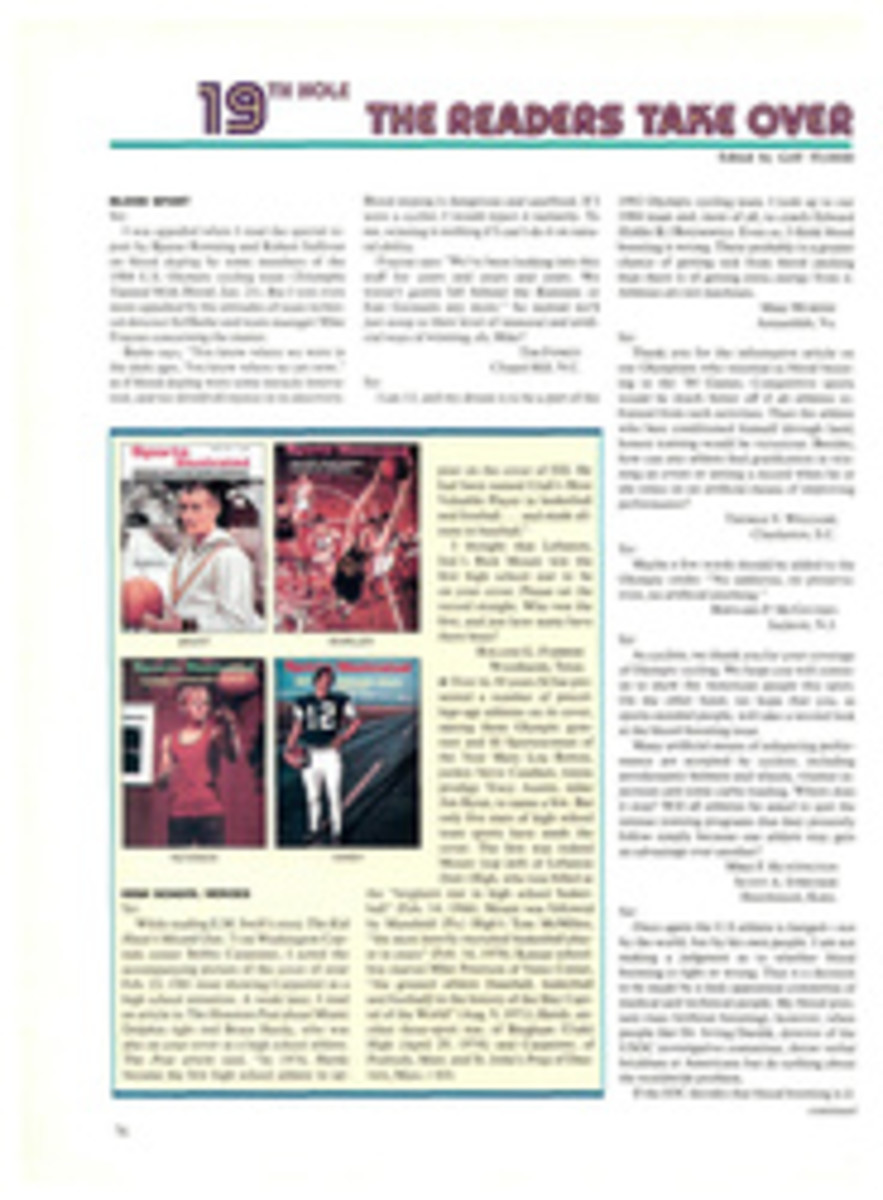
A NEW DIET WILL HELP THE U.S. SKI TEAM TO COMPETE MORE AND SNIFFLE LESS
Question: What do World Cup skiers do between races and between meals? Answer: They snack a whole lot. Well, it's really more like wolfing: feet up in front of the TV set, a pile of potato chips in one hand, a candy bar in the other. (Anybody who has ever combined chocolate bars with potato chips knows they taste sinfully great.) This is dessert. Chances are the racer has warmed up with a hot dog or two—or, in Europe, a fat sausage of some kind. It is also not surprising if the racer is sniffling and coughing. Thus you have two health problems the U.S. Ski Team is attacking this season.
Ski racers are basically healthy, of course, burning calories like furnaces; the rate can go up to 7,000 a day for some of the Nordic men. But, like many ultra-active people, they also eat whatever is served up—and lots of it—and fill in the off-hours with junk food. Ski racers are always hungry. But their typical diet stresses fats over carbohydrates. Fats tend to deplete glycogen, which is fuel for the muscles, and ultimately sap energy. This in turn causes fatigue, which makes the system vulnerable to upper respiratory infections.
"It takes a racer one full month to return to form after a four-day cold," says Jim Page, the director of the U.S. Nordic team. "In years past, our kids were always getting sick on the World Cup tour and losing their stamina."
What makes this season different is the final phase of a program started four years ago by the Shaklee Corporation of San Francisco, the vitamin giant. After starting out as a sponsor, calling itself the team's "official nutrition consultant," Shaklee jumped in last November with even bigger bucks and a new four-year contract as underwriter of the U.S. Ski Team's entire sportsmedicine program.
Scientists at Shaklee launched a major study of skiers' diets and eating habits and then set out to introduce changes. "Not in how much we eat," says Page, "we can still eat a ton, but in what we eat."
Testing of U.S. Nordic and Alpine racers revealed that, while men usually take in some 4,500 calories per day and women about 3,000, their nutrient levels were still too low. Blood samples revealed that the women in particular were short on iron and calcium, while both sexes were overdosing on fats and constantly snacking on all of those great-tasting goodies that everybody loves and nutritionists hate.
But all that is changing. The new Shaklee-designed ski racing diet calls for from 55% to 60% carbohydrates (compared to 46% before), 25% to 30% fats (down from 38%) and about the same intake of protein, 10% to 15%, compared to 14% or so earlier. More simply put, the racers are piling on veggies, rice, pasta, potatoes, bread and beans—while cutting down on whole milk, salad dressing, butter, mayonnaise and fatty meats. And, alas, no more hot dogs or those sensational German sausages.
For snacking, candy is out and fruits are in: At least 10 half-cup servings per day, and during peak racing and training periods male cross-country skiers are advised to eat up to 29 servings of fruit per day—which makes one wonder how in the world they have time left to ski. All this, plus multivitamins and multimineral supplements, which Shaklee sprinkles down on the team like rain.
"On the race circuit now," says Page, "we send out to the local grocery stores and buy cereals and milk for our breakfasts to supplement the traditional European fare. And soon Shaklee will have finished a special booklet for us—printed in several languages—that we'll hand out to European chefs and kitchen staffs. It will list exactly what the U.S. Ski Team needs to eat and tell how it should be prepared." European chefs are a touchy lot and may not take kindly to that sort of thing, but since hotels love the ski team business, they'll no doubt go along.
It's still too early in the 1984-85 World Cup season to tell if the improvement in diet will be reflected in the U.S. racing results. Even if the racers hit a hot streak, as the Alpine team did in Sarajevo, it'll be hard to credit good nutrition as the reason for success.
But the other side of the coin shows more promise for proving a point: Even if the Nordic and Alpine teams have a flat-out disastrous season, blown away by every other skiing nation, at least the team members will be healthier than ever. And sniffling less.

